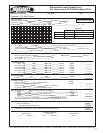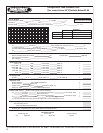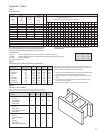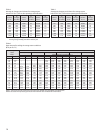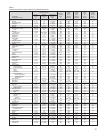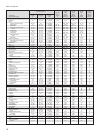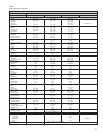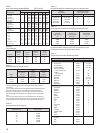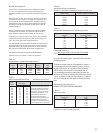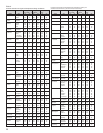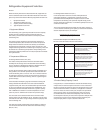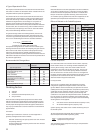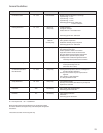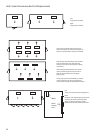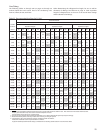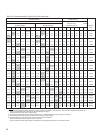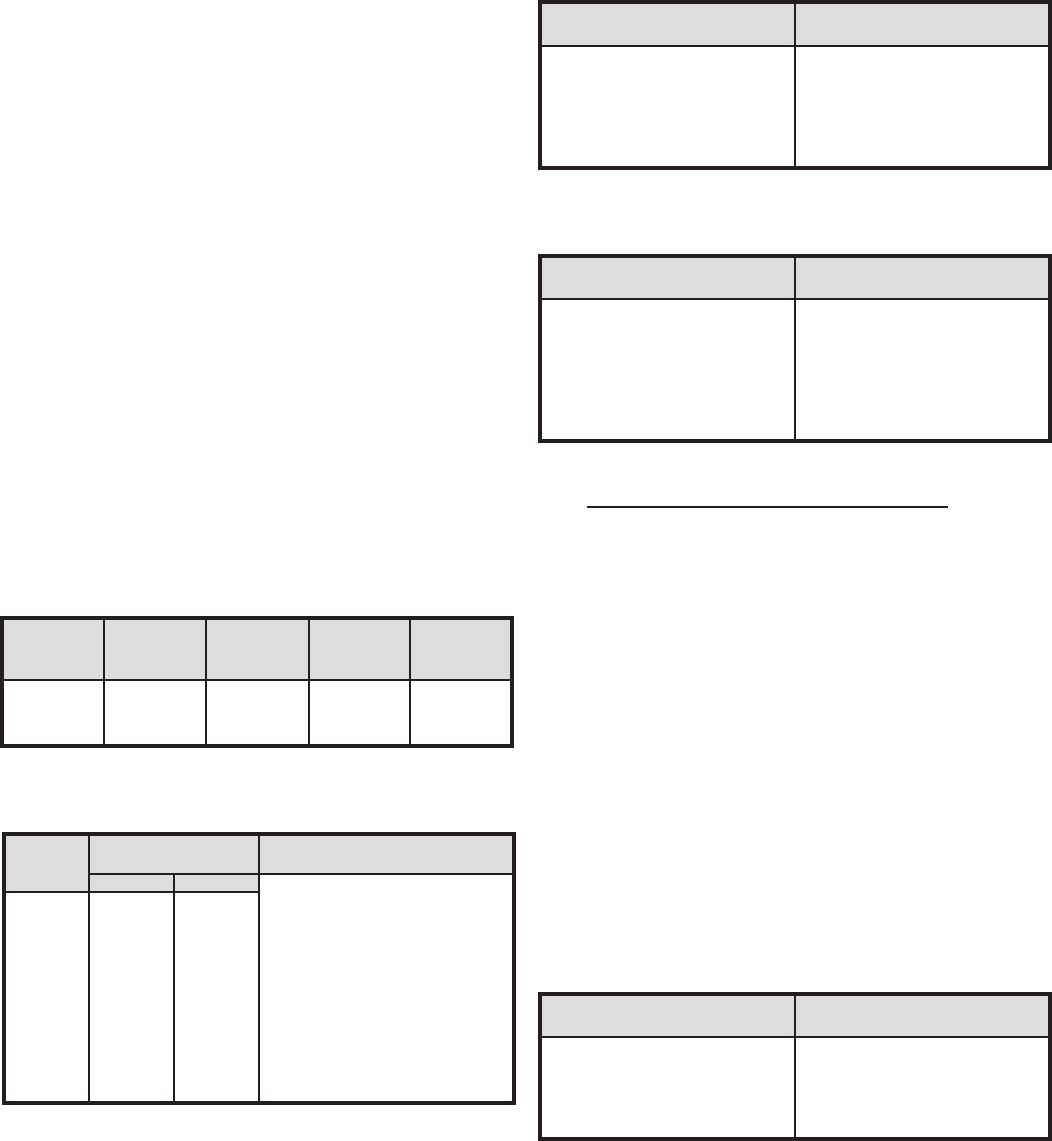
19
Banana Ripening Room
Banana hands or cluster shipped greens in berboard cartons,
10” x 16” x 22”, holding 42 lb. net (47 lbs. gross weight) with
864 boxes (3,288) lbs, net in a carload lot. Temperature held 56 to
58ºF.
Ripening facility consists of 5 or more air tight rooms to permit a
completely weekly turn-over (1/2 carload room, measuring 30’ x
6’ x 22’H outside, holds 432 boxes packed, 24 boxes each on 18
pallets stacked 3 high by 6 long). Ripening process started with
ethylene gas and ripening schedules maintained by control of
room temperatures.
Heating is provided to bring the load up to temperature before
ripening process is initiated. 12 to 20 Kw per carload. (Electric
heater sheath temperature not over 600ºF. in dead still air).
Evaporators are selected at a T.D. of 15ºF., or less, with evaporator
temperature controlled at no less than 40ºF. Approximately 12.5
cfm at 2/3” to 3/4” static per 41 lb. box of bananas.
Pull down load for 1ºF./hr. pull down rate based on maximum heat
of respiration of 2.5 BTU/lb. and 0.8 sp. ht. for bananas and 0.4 for
berboard boxing, plus minimal wall losses etc., 80 to 85 BTU/hr./
box of bananas. Holding load approximately 44 BTU/hr./box.
Extracted from ASHRAE 1974 APPLICATION HANDBOOK.
Loading: 5.3 lbs./Cu. Ft. of box, 11.28 lbs. net per pallet
Number Evaporator Approx. Elect.
Room Boxes BTU Per CFM Air Heat
Size Prod. 10º TD Volume Input
1/2 Car 432 36000 6000 6Kw
1 Car 864 72000 12000 12Kw
2 Car 1728 144000 24000 24Kw
Table 16
Banana Rooms – Refrigeration Requirements
Floor
Approx. 65% R.H.
SQ FT
Room Temp.
55ºF. 50ºF.
100 93 105
200 88 99
300 85 95
400 81 90
500 78 87
600 75 85
700 72 81
800 69 78
900 67 75
1000 65 73
1200 62 69
Room Loads based on continuous
operation and includes allowance
for average number of personnel,
processing equipment, etc., with
glass panel in one wall and walls
and ceiling insulated with 3” of
styrene with box located in air
conditioned area. Evaporator
should be low outlet velocity type
to avoid drafts and should be
selected for continuous operation
and not less than 30ºF. evap. temp.
Table 17
Meat Cutting/Prep Room Load (BTU/HR/SQ FT of oor area)
Table 18
Rapid load selection for back bars
(Based on 2” glass ber or equivalent insulation and 50ºF., T.D.)
Back Bar BTU/Hour Load Based on
Length in feet 16 Hour Compressor Operation
6 Feet 1,060
8 Feet 1,416
10 Feet 1,770
12 Feet 2,120
15 Feet 2,650
20 Feet 3,540
Table 19
Refrigeration requirements for hardening ice cream
Overrun Hardening Load, BTU
Percent per Gal. Ice Cream
60 532
70 500
80 470
90 447
100 425
110 405
120 386
Percentage overrun =
100 x
Wt. per gal. of mix - Wt. per gal. of ice cream
Wt. per gal. of ice cream
Ice cream assumed at 25ºF., and 30% frozen, entering
hardening room.
To retain a smooth texture in hardened ice cream, it
is necessary to freeze the remaining water content
rapidly. With forced air circulation, time to harden
will be about 10 hours with room maintained at
-20. Hardening rooms are usually sized to allow for
minimum of 3 times the daily peak production and for
a stock of all avors with the size based on 10 gallons
per sq. ft. stacked solid 6 ft. high, including space for
isles.
Reprinted by permission from
ASHRAE 1974 APPLICATION HANDBOOK
Table 20
Glass Door Loads
Box BTU per
Temperature Door
+35 1060
+30 960
0 1730
-10 1730
-20 1730
* Adjusted for 16-18 hour run time. Multiply number of doors
times door load above and add to box load.



